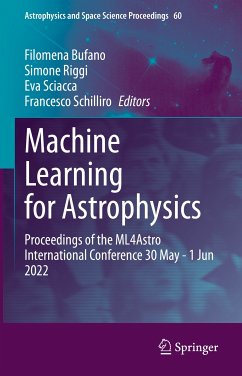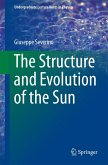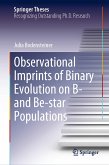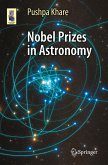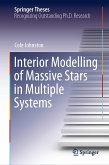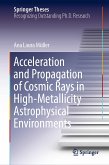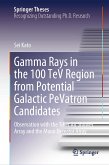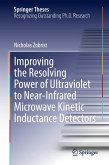Machine Learning for Astrophysics (eBook, PDF)
Proceedings of the ML4Astro International Conference 30 May - 1 Jun 2022
Redaktion: Bufano, Filomena; Schilliro, Francesco; Sciacca, Eva; Riggi, Simone
121,95 €
121,95 €
inkl. MwSt.
Sofort per Download lieferbar

61 °P sammeln
121,95 €
Als Download kaufen

121,95 €
inkl. MwSt.
Sofort per Download lieferbar

61 °P sammeln
Jetzt verschenken
Alle Infos zum eBook verschenken
121,95 €
inkl. MwSt.
Sofort per Download lieferbar
Alle Infos zum eBook verschenken

61 °P sammeln
Machine Learning for Astrophysics (eBook, PDF)
Proceedings of the ML4Astro International Conference 30 May - 1 Jun 2022
Redaktion: Bufano, Filomena; Schilliro, Francesco; Sciacca, Eva; Riggi, Simone
- Format: PDF
- Merkliste
- Auf die Merkliste
- Bewerten Bewerten
- Teilen
- Produkt teilen
- Produkterinnerung
- Produkterinnerung

Bitte loggen Sie sich zunächst in Ihr Kundenkonto ein oder registrieren Sie sich bei
bücher.de, um das eBook-Abo tolino select nutzen zu können.
Hier können Sie sich einloggen
Hier können Sie sich einloggen
Sie sind bereits eingeloggt. Klicken Sie auf 2. tolino select Abo, um fortzufahren.

Bitte loggen Sie sich zunächst in Ihr Kundenkonto ein oder registrieren Sie sich bei bücher.de, um das eBook-Abo tolino select nutzen zu können.
This book reviews the state of the art in the exploitation of machine learning techniques for the astrophysics community and gives the reader a complete overview of the field. The contributed chapters allow the reader to easily digest the material through balanced theoretical and numerical methods and tools with applications in different fields of theoretical and observational astronomy. The book helps the reader to really understand and quantify both the opportunities and limitations of using machine learning in several fields of astrophysics.
- Geräte: PC
- ohne Kopierschutz
- eBook Hilfe
- Größe: 9.03MB
Andere Kunden interessierten sich auch für
![The Structure and Evolution of the Sun (eBook, PDF) The Structure and Evolution of the Sun (eBook, PDF)]() Giuseppe SeverinoThe Structure and Evolution of the Sun (eBook, PDF)44,95 €
Giuseppe SeverinoThe Structure and Evolution of the Sun (eBook, PDF)44,95 €![Observational Imprints of Binary Evolution on B- and Be-star Populations (eBook, PDF) Observational Imprints of Binary Evolution on B- and Be-star Populations (eBook, PDF)]() Julia BodensteinerObservational Imprints of Binary Evolution on B- and Be-star Populations (eBook, PDF)97,95 €
Julia BodensteinerObservational Imprints of Binary Evolution on B- and Be-star Populations (eBook, PDF)97,95 €![Nobel Prizes in Astronomy (eBook, PDF) Nobel Prizes in Astronomy (eBook, PDF)]() Pushpa KhareNobel Prizes in Astronomy (eBook, PDF)22,95 €
Pushpa KhareNobel Prizes in Astronomy (eBook, PDF)22,95 €![Interior Modelling of Massive Stars in Multiple Systems (eBook, PDF) Interior Modelling of Massive Stars in Multiple Systems (eBook, PDF)]() Cole JohnstonInterior Modelling of Massive Stars in Multiple Systems (eBook, PDF)121,95 €
Cole JohnstonInterior Modelling of Massive Stars in Multiple Systems (eBook, PDF)121,95 €- -31%11
![Acceleration and Propagation of Cosmic Rays in High-Metallicity Astrophysical Environments (eBook, PDF) Acceleration and Propagation of Cosmic Rays in High-Metallicity Astrophysical Environments (eBook, PDF)]() Ana Laura MüllerAcceleration and Propagation of Cosmic Rays in High-Metallicity Astrophysical Environments (eBook, PDF)73,95 €
Ana Laura MüllerAcceleration and Propagation of Cosmic Rays in High-Metallicity Astrophysical Environments (eBook, PDF)73,95 € ![Gamma Rays in the 100 TeV Region from Potential Galactic PeVatron Candidates (eBook, PDF) Gamma Rays in the 100 TeV Region from Potential Galactic PeVatron Candidates (eBook, PDF)]() Sei KatoGamma Rays in the 100 TeV Region from Potential Galactic PeVatron Candidates (eBook, PDF)121,95 €
Sei KatoGamma Rays in the 100 TeV Region from Potential Galactic PeVatron Candidates (eBook, PDF)121,95 €![Improving the Resolving Power of Ultraviolet to Near-Infrared Microwave Kinetic Inductance Detectors (eBook, PDF) Improving the Resolving Power of Ultraviolet to Near-Infrared Microwave Kinetic Inductance Detectors (eBook, PDF)]() Nicholas ZobristImproving the Resolving Power of Ultraviolet to Near-Infrared Microwave Kinetic Inductance Detectors (eBook, PDF)121,95 €
Nicholas ZobristImproving the Resolving Power of Ultraviolet to Near-Infrared Microwave Kinetic Inductance Detectors (eBook, PDF)121,95 €-
-
-
This book reviews the state of the art in the exploitation of machine learning techniques for the astrophysics community and gives the reader a complete overview of the field. The contributed chapters allow the reader to easily digest the material through balanced theoretical and numerical methods and tools with applications in different fields of theoretical and observational astronomy. The book helps the reader to really understand and quantify both the opportunities and limitations of using machine learning in several fields of astrophysics.
Dieser Download kann aus rechtlichen Gründen nur mit Rechnungsadresse in A, B, BG, CY, CZ, D, DK, EW, E, FIN, F, GR, HR, H, IRL, I, LT, L, LR, M, NL, PL, P, R, S, SLO, SK ausgeliefert werden.
Produktdetails
- Produktdetails
- Verlag: Springer International Publishing
- Seitenzahl: 211
- Erscheinungstermin: 14. Oktober 2023
- Englisch
- ISBN-13: 9783031341670
- Artikelnr.: 69154538
- Verlag: Springer International Publishing
- Seitenzahl: 211
- Erscheinungstermin: 14. Oktober 2023
- Englisch
- ISBN-13: 9783031341670
- Artikelnr.: 69154538
- Herstellerkennzeichnung Die Herstellerinformationen sind derzeit nicht verfügbar.
Filomena Bufano (Ph.D. in Astronomy) has been a research staff scientist at Istituto Nazionale di Astrofisica (INAF) since 2016. Her scientific interests have been mainly focused on the study of massive stars evolution, in particular on their final stages. Promoting a multi-wavelength approach in her studies, she worked using data from different telescopes/surveys from UV to radio frequencies and has been a member of numerous international collaborations and projects. In view of the approaching era of a deluge of data expected from new ground and space-based facilities, she acquired deep skills in the use of machine learning algorithms: since ~2017 she has been engaged in two important European projects, i.e. ViaLactea and the ongoing NEANIAS project (sponsor of the conference, too). Nowadays, she is involved in the preliminary activities of the Square Kilometre Array focussed on the Galactic Plane and in the Early Science Data Analysis phase of two important pathfinder/precursor of SKA: ASKAP and MeerKAT. Eva Sciacca (Ph.D. in Mathematics for Technology) is a Computer Scientist and Information Technology researcher with over a decade of experience, working at the Istituto Nazionale di Astrofisica (INAF) since 2012. She has been extensively involved in cutting-edge research activities in the field of big-data, visual analytics, and machine learning. She has been instrumental in facilitating astrophysical data processing on distributed computing infrastructures, with a special focus on High-Performance Computing (HPC) and Cloud Computing. Over the past five years, Eva has played a pivotal role in several European-funded projects, including VIALACTEA, INDIGO-DataCloud, AENEAS, EOSC-Pilot, NEANIAS, and SPACE. She has been at the forefront of harnessing the potential of the European Open Science Cloud (EOSC) and the European High-Performance Computing Joint Undertaking (EuroHPC JU) to advance scientific research, and she isactively involved in the IT activities of the Square Kilometre Array (SKA) Regional Centres. Francesco Schilliro is a signal processing engineer skilled in algorithm and instrumentation for radio astronomy, working at the Istituto Nazionale di Astrofisica (INAF) since 2000. He started working at the Noto VLBI Antenna , where he was also involved in the design of radio astronomy antenna control system software and devices. Both experiences were important for his activity as digital engineer and designer for SKA post-processing equipment, in particular for the design and prototyping of Tile Processor Module of Low-Frequency Aperture Array component of SKA. His experience as software architect for radio astronomy control system was improved by working as software Architect for the SKA Dish Consortium and in particular for control and monitoring the SKA antennas. Currently he is involved in AI research involving the application of Machine Learning and Deep Learningalgorithms to heterogeneous hardware, processing data coming from SKA precursors (Meerkat, ASKAP). Recent activity involves quantum computing algorithms and application to astrophysical items. Simone Riggi (Ph.D. Physics) has been a Research Data Scientist at the Istituto Nazionale di Astrofisica (INAF) since 2012. His work has primarily focused on scientific data analysis and visualization, machine learning, distributed computing, instrumentation simulation, monitoring and control, and system engineering. He has contributed to large research and technological projects in the fields of radio astronomy, high-energy cosmic rays, and applied physics, such as the Pierre Auger Observatory experiment, the Muon Portal project, and various European H2020 projects (AENEAS, NEANIAS). Currently, he is involved in the design and construction phase of the Square Kilometer Array (SKA) telescope and in the Galactic science programs carried out within the ASKAP-EMU and MeerKAT-GPS surveys. In these contexts, he is responsible for the monitoring and control system of SKA-Mid antennas and for developing radio source analysis tools using machine learning techniques and multi-wavelength data.
Machine Learning for H? Emitters Classification.- Stellar Dating Using Chemical Clocks and Bayesian Inference.- Detection of Quasi-Periodic Oscillations in Time Series of a Cataclysmic Variable Using Support Vector Machine.- Dust Extinction from Random Forest Regression of Interstellar Lines.- QSOs Selection in Highly Unbalanced Photometric Datasets: The "Michelangelo" Reverse-Selection Method.- Radio Galaxy Detection Prediction with Ensemble Machine Learning.- A Machine Learning Suite to Halo-Galaxy Connection.- New Applications of Graph Neural Networks in Cosmology.- Detection of Point Sources in Maps of the Temperature Anisotropies of the Cosmic Microwave Background.- Reconstruction and Particle Identification with CYGNO Experiment.- Event Reconstruction for Neutrino Telescopes.- Classification of Evolved Stars with (Unsupervised) Machine Learning Post Proceedings.- Patterns in the Chaos: An Unsupervised View of Galactic Supernova Remnants.- Clustering of Galaxy Spectra: An Unsupervised Approach with Fisher-EM.- Unsupervised Classification Reveals New Evolutionary Pathways.- In Search of the Peculiar: An Unsupervised Approach to Anomaly Detection in the Transient Universe.- Classifying Gamma-Ray Burst X-Ray Afterglows with a Variational Autoencoder.- Reconstructing Blended Galaxies with Machine Learning.- Time Domain Astroinformatics.- A Convolutional Neural Network to Characterise the Internal Structure of Stars.- Finding Stellar Flares with Recurrent Deep Neural Networks.- Planetary Markers in Stellar Spectra: Jupiter-Host Star Classification.- Using Convolutional Neural Networks to Detect and Confirm Exoplanets.- Machine Learning Applied to X-Ray Spectra: Separating Stars from Active Galactic Nuclei.- Classification of System Variability Using A CNN.- Deep Learning Processing and Analysis of Mock Astrophysical Observations.- Deep Neural Networks for Source Detection in Radio Astronomical Maps.- Radio Image Segmentation with Autoencoders.- Citizen Science and Machine Learning: Towards a Robust Large-Scale Automatic Classification in Astronomy.- Background Estimation in Fermi Gamma-Ray Burst Monitor Lightcurves Through a Neural Network.- Machine Learning Investigations for LSST: Strong Lens Mass Modeling and Photometric Redshift Estimation.- Multi-Band Photometry and Photometric Redshifts from Astronomical Images.- Inference of Galaxy Clusters Mass Radial Profiles from Compton-? Maps with Deep Learning Technique.- Deep Learning 21cm Lightcones in 3D.- ConvNets for Enhanced Background Discrimination in the Diffuse Supernova Neutrino-Background (DSNB) Search.- Deep Neural Networks for Single-Line Event Direction Reconstruction in ANTARES.- Cats Vs Dogs, Photons Vs Hadrons.- Events Classification in MAGIC Through Convolutional Neural Network Trained with Images of Observed Gamma-Ray Events.- Federated Learning Meets HPC and Cloud.- Integration and Deployment of Model Serving Framework at Production Scale.- Predictive Maintenance for Array of Cherenkov Telescopes.
Machine Learning for H? Emitters Classification.- Stellar Dating Using Chemical Clocks and Bayesian Inference.- Detection of Quasi-Periodic Oscillations in Time Series of a Cataclysmic Variable Using Support Vector Machine.- Dust Extinction from Random Forest Regression of Interstellar Lines.- QSOs Selection in Highly Unbalanced Photometric Datasets: The "Michelangelo" Reverse-Selection Method.- Radio Galaxy Detection Prediction with Ensemble Machine Learning.- A Machine Learning Suite to Halo-Galaxy Connection.- New Applications of Graph Neural Networks in Cosmology.- Detection of Point Sources in Maps of the Temperature Anisotropies of the Cosmic Microwave Background.- Reconstruction and Particle Identification with CYGNO Experiment.- Event Reconstruction for Neutrino Telescopes.- Classification of Evolved Stars with (Unsupervised) Machine Learning Post Proceedings.- Patterns in the Chaos: An Unsupervised View of Galactic Supernova Remnants.- Clustering of Galaxy Spectra: An Unsupervised Approach with Fisher-EM.- Unsupervised Classification Reveals New Evolutionary Pathways.- In Search of the Peculiar: An Unsupervised Approach to Anomaly Detection in the Transient Universe.- Classifying Gamma-Ray Burst X-Ray Afterglows with a Variational Autoencoder.- Reconstructing Blended Galaxies with Machine Learning.- Time Domain Astroinformatics.- A Convolutional Neural Network to Characterise the Internal Structure of Stars.- Finding Stellar Flares with Recurrent Deep Neural Networks.- Planetary Markers in Stellar Spectra: Jupiter-Host Star Classification.- Using Convolutional Neural Networks to Detect and Confirm Exoplanets.- Machine Learning Applied to X-Ray Spectra: Separating Stars from Active Galactic Nuclei.- Classification of System Variability Using A CNN.- Deep Learning Processing and Analysis of Mock Astrophysical Observations.- Deep Neural Networks for Source Detection in Radio Astronomical Maps.- Radio Image Segmentation with Autoencoders.- Citizen Science and Machine Learning: Towards a Robust Large-Scale Automatic Classification in Astronomy.- Background Estimation in Fermi Gamma-Ray Burst Monitor Lightcurves Through a Neural Network.- Machine Learning Investigations for LSST: Strong Lens Mass Modeling and Photometric Redshift Estimation.- Multi-Band Photometry and Photometric Redshifts from Astronomical Images.- Inference of Galaxy Clusters Mass Radial Profiles from Compton-? Maps with Deep Learning Technique.- Deep Learning 21cm Lightcones in 3D.- ConvNets for Enhanced Background Discrimination in the Diffuse Supernova Neutrino-Background (DSNB) Search.- Deep Neural Networks for Single-Line Event Direction Reconstruction in ANTARES.- Cats Vs Dogs, Photons Vs Hadrons.- Events Classification in MAGIC Through Convolutional Neural Network Trained with Images of Observed Gamma-Ray Events.- Federated Learning Meets HPC and Cloud.- Integration and Deployment of Model Serving Framework at Production Scale.- Predictive Maintenance for Array of Cherenkov Telescopes.
